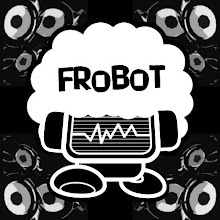When Richie Hawtin wanted to create synesthetic visuals triggered by the music he’s playing live as Plastikman, he turned to his old pals at Toronto software house Derivative.
Derivative’s TouchDesigner helped propel this year’s Plastikman tour to that mythical “next level” by providing an interface with the performance-friendly electronic-music software Ableton Live that allowed the component parts of Hawtin’s skeletal techno tracks to produce images that moved and changed shape in direct response to the sounds he’s generating onstage. In 3-D, no less.
Heaven only knows how one actually brings something like that to fruition, but TouchDesigner — which will respond to pretty much any input you desire, from sound to light to touch and beyond — is the relatively young outgrowth of designer Greg Hermanovic’s longtime desire to use computers to produce “interactive, real-time art.” He’d been dreaming of it since he put his first pixel up on a computer screen while working on a U.N. research ship in Africa during the ‘70s, came a little closer to realizing his dream doing special-effects software with successful local CGI-enabler Side Effects — whose Houdini product has since been used in more than 400 feature films — and has gotten as close as he’s yet come to his perfect vision of a worldwide, collaborative art-sharing platform that’s “self-perpetuating and a bit out of control in its own way” and that could be used as a universal education and research tool since launching TouchDesigner eight years ago.
TouchDesigner has made stunning “live” artworks possible everywhere from M.I.T. to the world’s largest yacht, but Hermanovic — whose software’s patch-and-collage aesthetic is inspired in part by his love of old modular synthesizers and their many dangling cables — has also become something of a go-to guy for electronic musicians looking for a visual component to their shows. Swayzak enlisted Derivative, for instance, to jazz up its recent DJ gig at 99 Sudbury, while when the Star spoke to Hermanovic this past Friday he was just returning from a little last-minute tweaking with DJ Shadow’s crew at the Phoenix.
Q: So was Hawtin running some custom stuff for those Plastikman live gigs?
A: It was, but everything that Rich is doing you can do with the free version that’s on our Web site. It’s custom because we added more stuff to it, but anybody could have done it. That’s the nice thing about TouchDesigner is anybody can use TouchDesigner to make anything they see other people making.
Q: In this case, Ableton Live was being used to generate the visuals, right?
A: He’s sending this stream of data into TouchDesigner, which is running live on another computer. So we’re just taking all this looping data and this controller data, and every song we have mapped differently to a visual. So TouchDesigner takes his inputs and for every song we know what the visual is going to be so we display it out on the LED screens. He’s kind of building music tracks as he goes and we’re working with him and a visual designer going ‘Okay, part of that sound goes with this visual element and this knob goes with that thing, and then when the song progresses it will increase the brightness of this and the size of that.’ So it’s Rich and us working side-by-side so you end up with a look and a theme for a song.
Q: Why design a tool for making interactive art?
A: I’m a big fan of experimental films — I’m a huge fan of Norman Mclaren — and I wanted to reproduce some of these experimental-film effects using software, so that’s why I got into computer graphics: so I could do special effects. I wanted to do what a musician does — perform live, tweak things — and do that visually, but I couldn’t do that with special-effects software. In the ’90s, you couldn’t do real-time computer graphics. Well, you could, but it was on computers that cost $200,000.
Q: What’s your ultimate goal for TouchDesigner? Having it react directly to electronic signals from people’s brains?
A: When I see researchers who are doing high-end chemistry research or something using a component made by a 10-year-old in his basement, not knowing where it came from, that’s when I’ll be aware that we’ve kind of closed the loop: when kids are making parts of bigger systems for high-end researchers or professionals. It’s gonna happen.




No comments:
Post a Comment